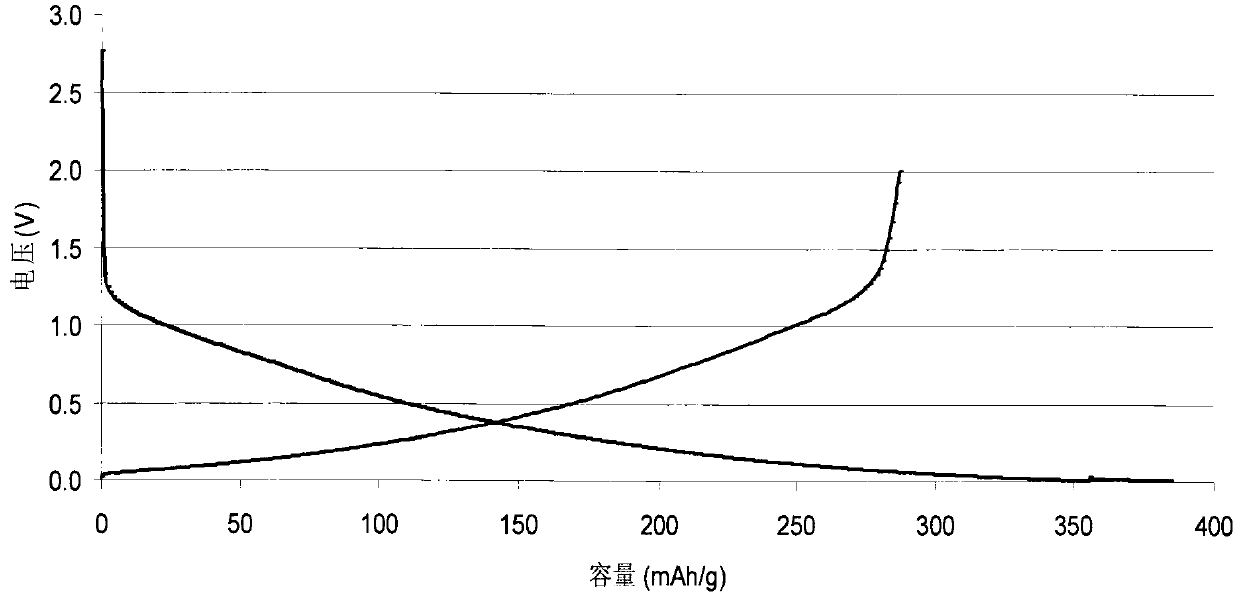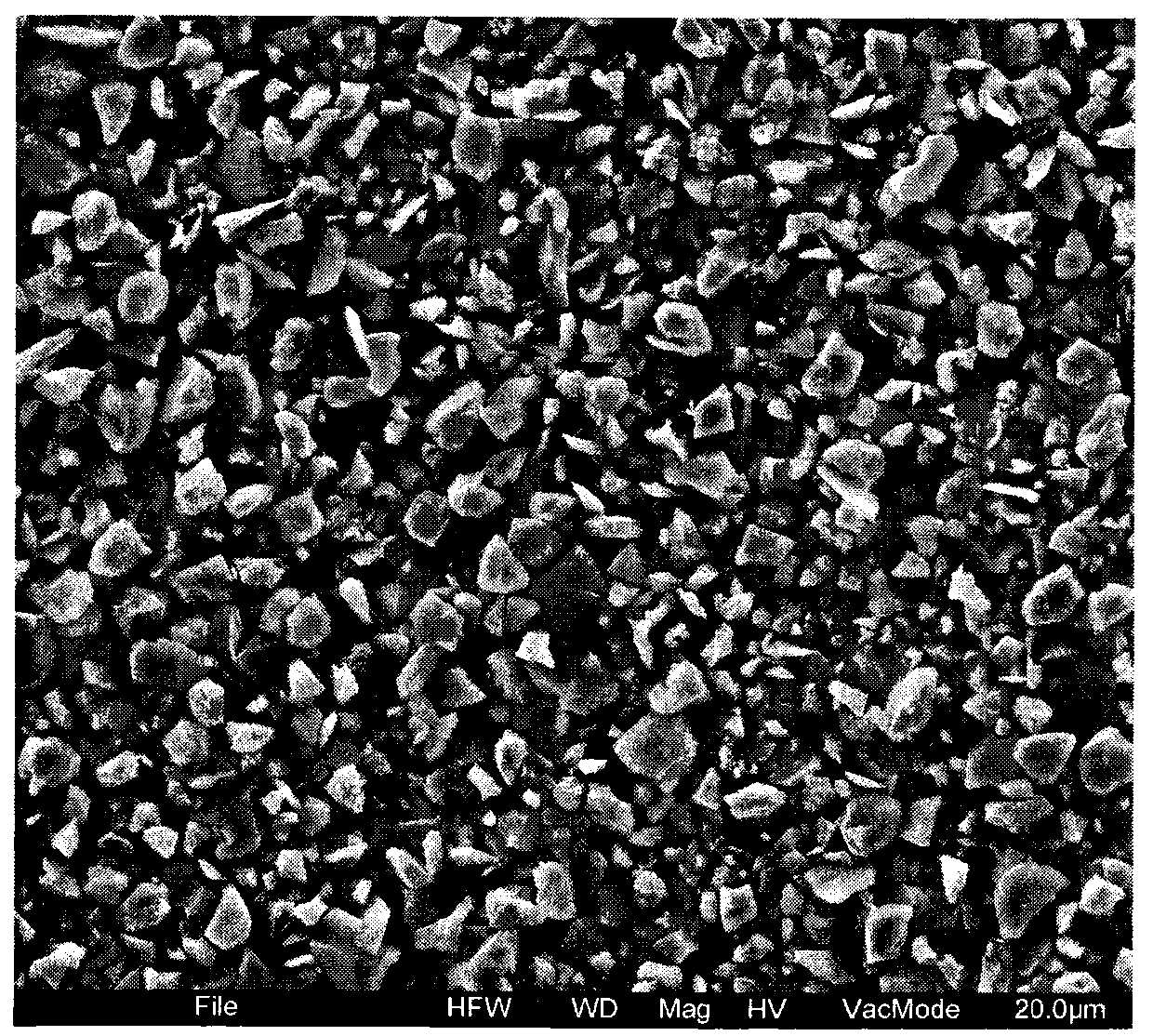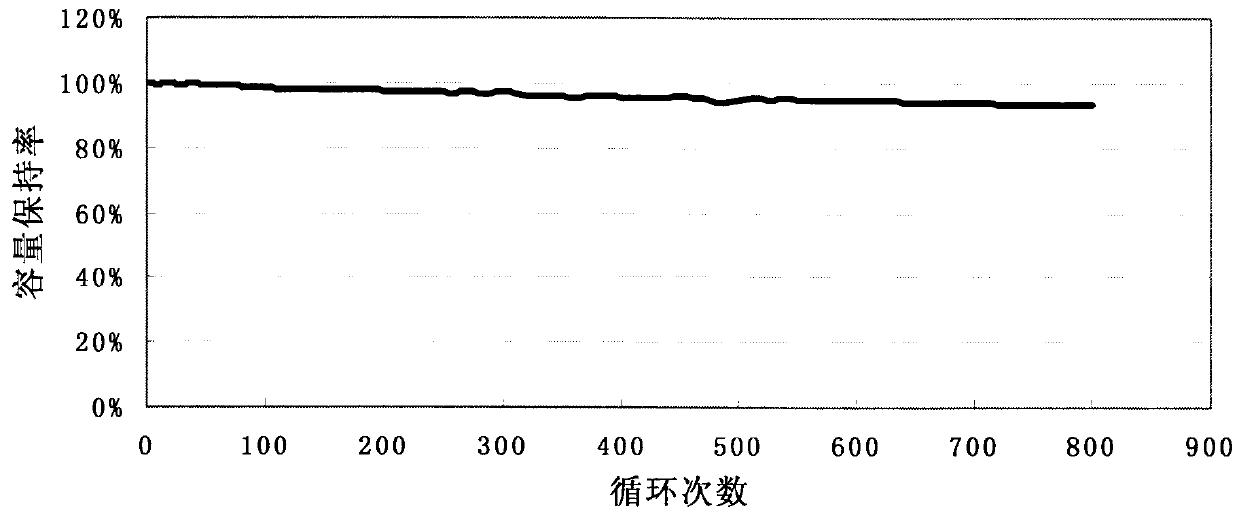Surface-modified hard-carbon negative electrode material and preparation method thereof
A surface modification and negative electrode material technology, which is applied in the preparation/purification of carbon, electrode manufacturing, battery electrodes, etc., can solve the problems of low initial charge and discharge efficiency, interface side reactions, etc. Stable and adaptable effect
- Summary
- Abstract
- Description
- Claims
- Application Information
AI Technical Summary
Problems solved by technology
Method used
Image
Examples
Embodiment 1
[0032] Under stirring, add coal tar pitch, benzaldehyde and p-toluenesulfonic acid in a mass ratio of 10:5:2 into the reactor, mix well, heat up to 120°C for 2 hours of cross-linking polymerization, and cool to room temperature to discharge; The hard carbon carbon precursor is obtained by pulverization and classification, and the particle size is controlled at a volume average particle size D50 of 8-10μm; the hard carbon carbon precursor and the coating agent petroleum pitch (mass ratio 90:10) are alternately added to the coating kettle under stirring During the coating process, heat to 600°C for 3 hours; after coating, perform carbonization treatment at 1150°C for 4 hours under the protection of nitrogen; then cool the reaction product to room temperature and ball mill (ball to material ratio 1:1, speed 400Hz ) For 12 hours, use a 250-mesh vibrating screen to obtain a surface-modified hard carbon negative electrode material with a half-cell capacity of 285.6mAh / g and a first ch...
Embodiment 2
[0034] Under stirring, add coal tar pitch, benzaldehyde and p-toluenesulfonic acid in a mass ratio of 10:7:2 into the reactor, mix well, heat up to 120°C for 2 hours of cross-linking polymerization, and cool down to room temperature for discharge; The hard carbon carbon precursor is obtained by pulverization and classification, and the particle size is controlled at a volume average particle size D50 of 8-10μm; the hard carbon carbon precursor and the coating agent petroleum pitch (mass ratio 85:15) are alternately added to the coating kettle under stirring During the coating process, heat to 350°C for 10 hours; after coating, under the protection of nitrogen, carry out carbonization treatment at 1000°C for 3 hours; then cool the reaction product to room temperature and ball mill (ball to material ratio 1.5:1, speed 400Hz ) For 6 hours, use a 250 mesh vibrating sieving machine to obtain surface-modified hard carbon anode materials, with a half-cell capacity of 286.4mAh / g and an ...
Embodiment 3
[0036] Under stirring, add coal tar pitch, benzaldehyde and sulfuric acid into the reactor at a mass ratio of 10:7:1, mix well, heat up to 120°C for 2 hours of cross-linking polymerization, cool to room temperature and discharge; Hard carbon carbon precursor, the particle size is controlled at the volume average particle size D50 of 8-10μm; the hard carbon carbon precursor and the coating agent coal pitch (mass ratio 90:10) are alternately added to the coating kettle under stirring, and heated Coating treatment to 500℃ for 5 hours; after coating, under the protection of nitrogen, carry out carbonization treatment at 800℃ for 6 hours; then the reaction product is cooled to room temperature and ball milled (ball to material ratio 1:1, rotation speed 400Hz) for 12 hours , Use a 250-mesh vibrating sieving machine to screen to prepare a surface-modified hard carbon anode material with a half-cell capacity of 285.7mAh / g and a first charge-discharge efficiency of 80.5%.
PUM
| Property | Measurement | Unit |
|---|---|---|
| Capacity | aaaaa | aaaaa |
Abstract
Description
Claims
Application Information
 Login to View More
Login to View More - R&D
- Intellectual Property
- Life Sciences
- Materials
- Tech Scout
- Unparalleled Data Quality
- Higher Quality Content
- 60% Fewer Hallucinations
Browse by: Latest US Patents, China's latest patents, Technical Efficacy Thesaurus, Application Domain, Technology Topic, Popular Technical Reports.
© 2025 PatSnap. All rights reserved.Legal|Privacy policy|Modern Slavery Act Transparency Statement|Sitemap|About US| Contact US: help@patsnap.com



